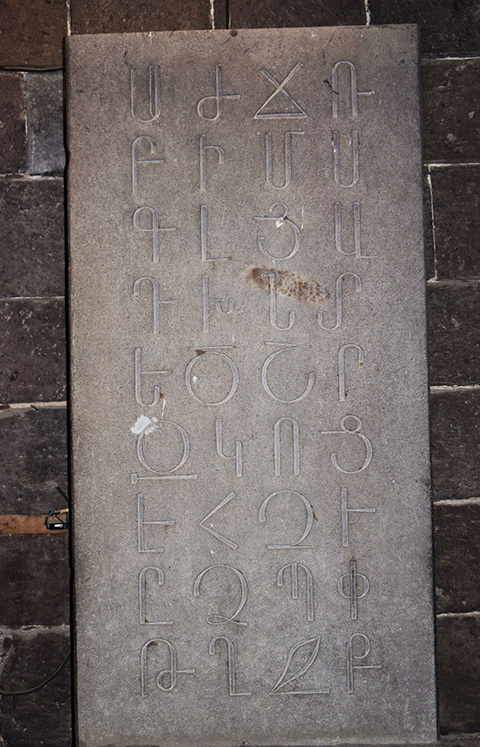
Advancing structural biology to blazing speed
AlphaFold continues to impress structural biologists with the unprecedented number of protein structures it makes available.
The algorithm, written by Alphabet subsidiary DeepMind, was introduced at the Critical Assessment of Protein Structure Prediction contest, where it made headlines in December 2020 by achieving predictions with up to 90% agreement with newly solved crystals.

AlphaFold uses information from several sources to predict a protein’s 3D structure. It integrates multiple sequence alignments, which can trace a protein’s evolutionary conservation, with the predicted interatomic distance for each pair of amino acids to generate the predicted coordinates of every residue in a protein.
This year, DeepMind, in collaboration with the European Bioinformatics Institute, released more than 200 million protein structure predictions, roughly 25 terabytes of data that cover nearly all of the protein sequences known to the UniProt database. By comparison, about 180,000 experimentally validated structures have been deposited to the Protein Data Bank in its 50 years of existence.
Structural biologist Karen Allen of Boston University wrote, “There is no doubt that the use of AlphaFold and machine learning is making the biggest impact in structural biology … inform(ing) therapeutic discovery, protein engineering and the elucidation of enzyme mechanisms.”
The tool has enabled structural analysis of proteins that have yet to be crystallized or studied using cryo-electron microscopy, has helped put the pieces of large complexes together (see “Giant, intricate structures”), and is being used to design and test new ligands for known proteins. Its prediction quality remains best for protein domains with more orderly structures and with some homology to a known structure. Still, for applications from protein engineering to predicting interactions and multimer structures, it has revolutionized the field.
Paul Craig, a biochemist at Rochester Institute of Technology, noted that biologists soon will need stronger search engines to look for commonalities among millions of structural models. “We have 214 million AlphaFold structures now,” he said. “How many of those are kinases? How many are hydrolases? And how many look like my protein of interest?”
Protein structures with important functions tend to be even more strongly conserved than amino acid sequences — but are comparatively difficult to detect. To find common structural features, researchers need a tool that will sort through the whole universe of known structures and identify those that match a known input. Craig recently began using a search engine called Foldseek, introduced in a preprint this year, which can compare a protein query to a 3D structure database roughly 1,000 times faster than other available structural search engines.
Foldseek architect Martin Steinegger, an assistant professor at Seoul National University, said it works by translating structural information into what he calls a structural alphabet that describes each residue in relation to its nearest neighbors. With atomic coordinates thus condensed, the algorithm can use techniques from bioinformatic tools such as BLAST to look for structural similarity.
According to Steinegger, few computational tools have been scaled up to AlphaFold levels. However, he expects to see many more in the coming years.
Enjoy reading ASBMB Today?
Become a member to receive the print edition four times a year and the digital edition monthly.
Learn moreGet the latest from ASBMB Today
Enter your email address, and we’ll send you a weekly email with recent articles, interviews and more.
Latest in Opinions
Opinions highlights or most popular articles

The tortoise wins: How slowing down saved my Ph.D.
Graduate student Amy Bounds reflects on how slowing down in the lab not only improved her relationship with work but also made her a more productive scientist.

How pediatric cataracts shaped my scientific journey
Undergraduate student Grace Jones shares how she transformed her childhood cataract diagnosis into a scientific purpose. She explores how biochemistry can bring a clearer vision to others, and how personal history can shape discovery.

Debugging my code and teaching with ChatGPT
AI tools like ChatGPT have changed the way an assistant professor teaches and does research. But, he asserts that real growth still comes from struggle, and educators must help students use AI wisely — as scaffolds, not shortcuts.

AI in the lab: The power of smarter questions
An assistant professor discusses AI's evolution from a buzzword to a trusted research partner. It helps streamline reviews, troubleshoot code, save time and spark ideas, but its success relies on combining AI with expertise and critical thinking.

How AlphaFold transformed my classroom into a research lab
A high school science teacher reflects on how AI-integrated technologies help her students ponder realistic research questions with hands-on learning.

Writing with AI turns chaos into clarity
Associate professor shares how generative AI, used as a creative whiteboard, helps scientists refine ideas, structure complexity and sharpen clarity — transforming the messy process of discovery into compelling science writing.

